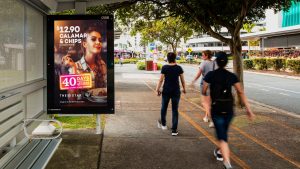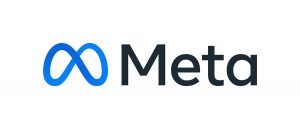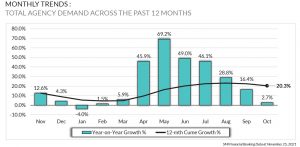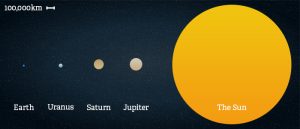
PROGRAMMATIC OUTDOOR – OOH! MEDIA COMPLETES THE PUZZLE

Last week, oOh!media announced they had finalised an agreement with Vistar Media (a programmatic SSP/DSP tech company) allowing the platform to trade their inventory programmatically. Dipping their toes in cautiously with only Billboard and Street Furniture sites, oOh!media are the last piece of the Out-of-Home programmatic puzzle. Advertisers now have access to buying outdoor inventory across multiple formats with all major media owners through one trading platform.
For the outdoor media owners, programmatic DOOH can represent additional income (albeit small) and they hope a way to try and grab some of those Digital dollars being spent in Facebook and Google rather than taking from traditional Outdoor budgets.
Digital Out-of-Home (DOOH) can be purchased one of two ways; traditionally through direct agreements with media owners or programmatically. Programmatic trading differs in that instead of selecting individual sites, or a ‘pack’ of predetermined panels, you buy a volume of audience impressions that will be delivered across all sites at various times of day/week. The advertiser pays on a cost per thousand (CPM), opposed to a set weekly price for an ongoing space in an ad rotation.
How do they come up with the audience impressions? Currently there is no standardisation or regulation across the industry, so each outdoor media owner is using a different algorithm or formula to determine the audience or impression delivery for each screen at each time of day. They generally use MOVE data (the standard outdoor industry measurement tool) as the base, and then overlay with device ID information (e.g. seasonality trends and people movement) to calculate a figure of how many people will see your ad at the single time it is played. These figures are supplied to the trading platform to sell those impressions (this process is called the CPM multiplier).
Let’s talk programmatic pricing. The media owner sets the CPM’s the SSP can trade the inventory for. Advertisers are paying roughly a $30-40 CPM for billboard impressions and $20-30 for Street Furniture impressions. In comparison to buying direct with a media owner, a $100k national digital billboard campaign would have a CPM of approximately $15. For a week of Digital Street Furniture in Sydney you could pay $35k which would attract a CPM of roughly $6.
The advantages of buying DOOH programmatically include flexibility, location targeting and campaign timing. Campaigns can be bought on a weekly basis, paused, cancelled, moved all through a self-serve buying platform. Outdoor bought directly is largely a non-cancellable medium. If you wanted blanket coverage in a specific location, programmatic DOOH allows you to buy various formats/inventory from multiple media owners in the one transaction. The campaign can also appear at a specific time of day or weather event.
When it comes to reporting, the platform would supply a list of what screens your ads appeared on and the delivered weekly impressions. You wouldn’t receive a proof of posting photo like in a traditional buy. The verification is through the digital buying platform or DSP. However these days, most digital screen verification is now done through a reporting system such as Seedoh, which confirms that your ad “appeared”.
PDOOH is great for an advertiser who wants to be tactical and flexible with outdoor, and avoid high entry costs. Of course the traditional benefits of buying a broad Outdoor campaign remain to be high Reach and Frequency and great for branding. Programmatic DOOH currently makes up possibly 2% of all Outdoor spend in Australia and after 10 years overseas it accounts for approximately 5% of all Outdoor spend in the UK and around 8% in United States.
WHAT’S NEW IN MEDIA – MORGAN’S LATEST RESEARCH

The new 12 month Morgan Database (Oct’20 to Sept’21) has just arrived and without doubt has made our Head of Strategy and Research, Steve Allen, the most excited person at Pearman.
In Australian we are lucky to have, pretty much uniquely globally, such a large, stable, and continuous Single Source Database at our fingertips. This delivers not just Media metrics but also a wealth of consumer attitudes, activities, behaviour, purchasing intentions, psychographics and so on … all leading to Buyergraphics being the most accurate targeting available anywhere.
So what does this new database tell us when comparing to the previous 12 months? Remembering the 12 months prior was the epicentre of Covid -19 (6-9 months of major disruption and lockdowns). This database is similarly affected, but perhaps not as severely, excepting Victoria and to a lesser extent NSW and Queensland. Clearly, consumer behaviour is by no means back to normal.
However, the summary of Media trends/movements over the last 12 months is as follows;
| Commercial FTA | +1.02% |
| BVOD | +15.24% |
| SVOD | +3.14% |
| Commercial Radio | +4.89% |
| Newspapers Printed | +4.13% |
| Newspapers Online | +2.64% |
| Magazines Printed | -3.30% |
| Internet | -0.41% |
| Social | +11.31% |
| Outdoor | -16.06% |
| Cinema | -15.17% |
There are lots of moving parts in the above, like the fact that Cinema is only now really re-opening in Sydney & Melbourne and therefore only commencing recovery. Also, many Mastheads have been cancelled and no longer exist in both Newspapers and Magazines. In lockdown, people could not move around much for Outdoor. As with all research, we use past data for future projections so it is important to appreciate and understand the nuances of research during the Covid years.
DIGITAL – WHAT’S THE META WITH FACEBOOK?

With a reported $32 billion operating profit in 2020, perhaps nothing is the matter with Facebook. However, worldwide there has been a steady stream of negative stories culminating recently in a whistleblower from Facebook saying there needs to be regulation to rein in the company’s management and reduce the harm being done to society. Facebook is Australia’s No.1 least trusted brand based on Roy Morgan’s latest quarterly Trust / Distrust survey. Australia is probably not Facebook’s most popular country particulalry given the Government passed a world first law making Facebook and Google pay for news content on their platforms. Now Scott Morrison recently announced he wants Facebook to be liable for anonymous comments. Of course this doesn’t stop Scomo from having 800,000 followers on his Facebook account.
On the 28th October Facebook rebranded itself as Meta and became the company that owns Facebook, Instagram and WhatsApp. Cynics may say it is trying to distance itself from the Facebook name. The name comes from ‘Metaverse’ meaning a virtual-reality space in which users can interact with a computer-generated environment and other users. in announcing the rebranding Mark Zuckerberg wrote, “In this future, you will be able to teleport instantly as a hologram to be at the office without a commute, at a concert with friends, or in your parents’ living room to catch up.” Meta does not want to be known solely as a social media company and sees a future in virtual reality.
Although Facebooks iteration of the Metaverse is in its infancy the concept of a Metaverse is not new. Online worlds such as Roblox and Decentraland have been established in early 2006. However, recently brands have started to integrate themselves within these online spaces.
Most notably Nike created “Nikeland” on digital platform Roblox. Inspired by the real-life Nike headquarters, Nikeland hosts a series of games and inspires users to play and engage online. As this space advances opportunities to monetize will increase with prizes won within the games potentially being transferred into real life credit to be put towards Nike products. The possibilities in this space are only just emerging.
The success of the Metaverse solely depends on if the masses adopt the technology, it’s safe to say social media is thoroughly ingrained in our daily life. But with the polarizing nature of a company like Facebook and concerns about their current influence now seeping into the conversation people may be reluctant to take part.
The Metaverse concept at this current stage is too abstract to comprehend which will lead to initial hesitancy. It will be a while before we see metaverse advertising on media plans but it’s a progressing space and a good idea to stay across new developments.
But who knows, in a few years you may be reading the Pearman Pulse while sitting on a beach in the metaverse.
SMI UPDATE – OCTOBER 2021

The October SMI spend of $753.7million is up 2.7% compared to Oct’20 however the more interesting news is that it is 1.6% above the pre-covid world of Oct’19. Whilst the September SMI data showed reduced momentum, it is great to see October has rebounded quite strongly. The Jul’21-Oct’21 is 20.7% up (vs ’20) and 3.5% up on 2019.
Government spend showed the biggest increase as it was 65% greater than in Oct’20. In fact, Government spend for Jul-Oct’21 is 162% greater than their Jul-Oct’19 spend – probably coincidental that elections are on the horizon?? The two biggest categories of Automotive and Retail are still down or static compared to last year’s spend. If they increase that will really help overall spend. Financial Services (+31.9%) and Communications (+29.6%) continue to increase their spends compared to 2020 and 2019.
As you would expect all the media do well when advertising spend is healthy. At present many of the media are booked out short term hence the importance to plan your advertising campaigns in advance. Television and Digital continue to increase their spend compared to 2019. In October Television went down -8.4% however this can be explained due to the AFL and NRL finals being moved into October in 2020. Digital had an 18.3% increase in October. Outdoor increased 12.7% but is still a long way off their 2019 level. Cinema had another good month increasing 53.4% and radio was up +6.5%. The SMI figures possibly mask what is going on in Newspapers and Magazines when you consider how many print publications have been closed over the past couple of years and the shift to Digital editions in those media. Newspapers were down -14.6% in Oct’21 while Magazines were up +15.8%
FAST FACTS

- Morgan forecast $5.4 billion would have been spent by Australians over the 4 days of Black Friday & Cyber Monday
- One million earths can fit into the sun – how small do you feel now?
- Don’t buy property in Alaska – each year it has about 5,000 earthquakes
- All Covid strains are named after letters from the Greek alphabet – hopefully we won’t get to know the whole alphabet!
- Oh to be a Turritopsis dohrnii (immortal jellyfish) – it never dies
- Tomorrow (4th December) is national cookie day so get ready to refill your cookie jar
- The price of a 40ft shipping container is 196% higher than the same time last year
